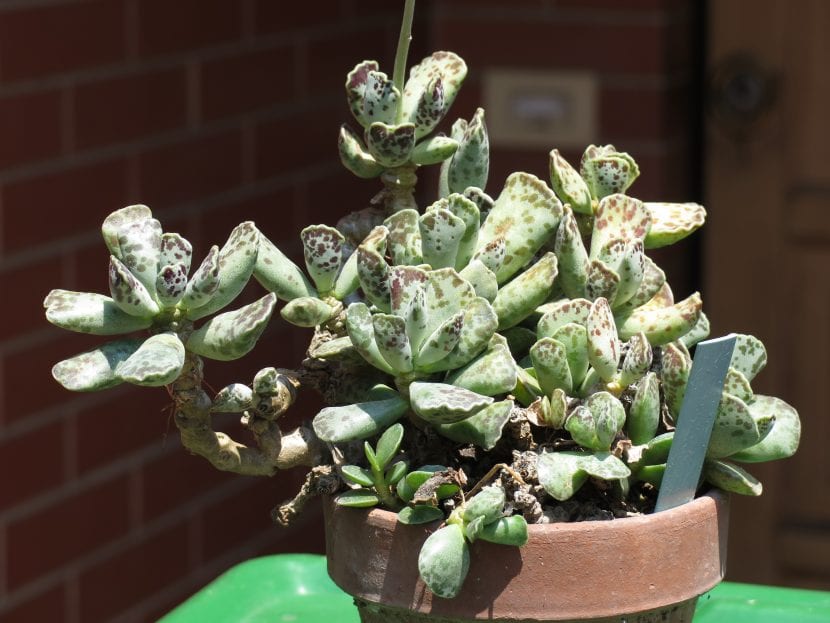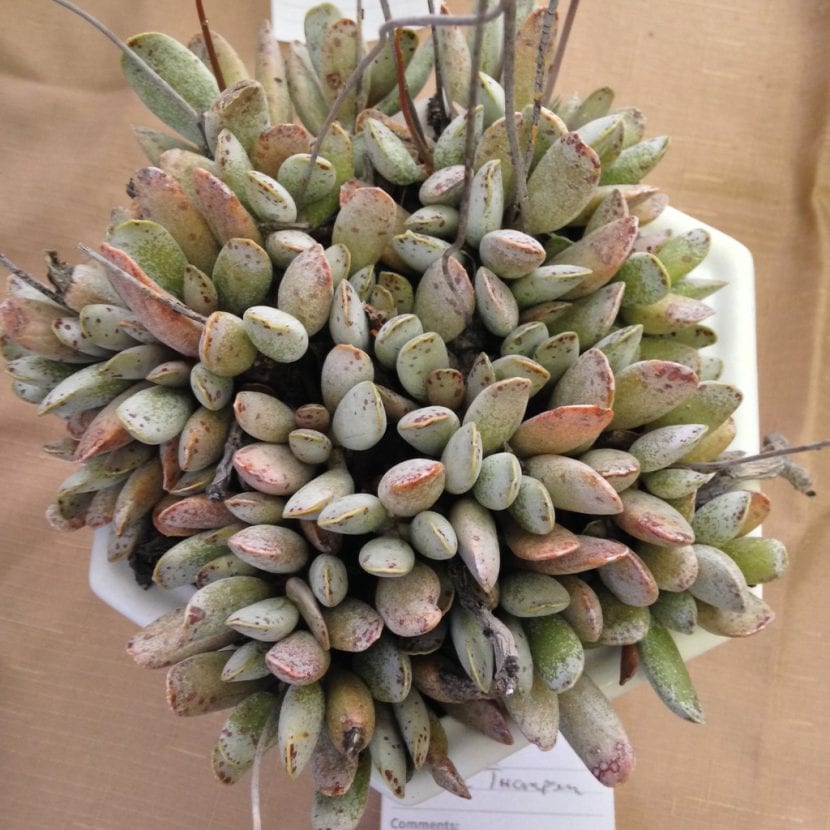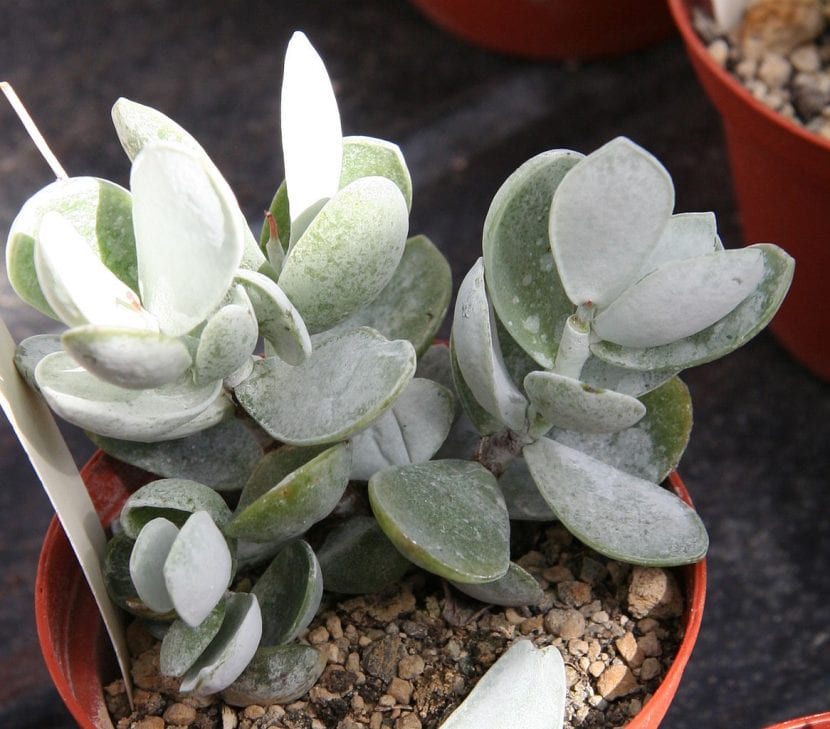
Adromischus cooperi
If you are a collector of succulent plants and you are already running out of space, or if on the contrary you would like to have one or more plants with which to decorate your home that are easy to care for, we recommend any species of the genus Adromischus.
These precious cunts they can be kept in a pot throughout their life, since they have very short roots and a size not exceeding twenty centimeters. In addition, its flowers, although they are not particularly showy, are quite pretty.
What are the Adromischus like?

Adromischus mammillaris
These are non-cactaceous succulent plants endemic to southern Africa that form dwarf clumps, about 20-30 centimeters tall. The leaves are very small, a maximum of one centimeter or 3cm, fleshy, elongated or short, of colors that can go from light green to dark green, going through silvery green / whitish. They often have red-violet dots.
The flowers appear in spikes during spring-summer from the center of the plant. They are composed of five undivided petals, which can be pink, white or purple.
How are they cared for?

Adromischus leucophyllus
If you would like to know how to have them perfect, then we tell you what their care is:
- Location: it has to give them a lot of light, if possible directly.
- Irrigation: two or three times a week in summer, and once a week the rest of the year. If you have a plate under them, it must be removed within ten minutes of watering.
- Substratum: it is important that it has good drainage. You can simply use pumice, or black peat mixed with perlite in equal parts.
- Subscriber: in spring and summer it must be paid with a fertilizer for cacti and succulents, following the indications specified on the product packaging.
- Transplant: Although they are small plants, it is advisable to change them once purchased - as long as it is spring or summer - or wait for one of these seasons to arrive. They will have to be transplanted again after two to three years.
- Plagues and diseases: they do not usually have, but you have to be careful with snails and cottony mealybugs.
- Multiplication: the easiest and fastest method is by cuttings of leaves, in spring. You have to fill a pot with, for example, pumice, and place the leaves lying down a little bit buried by the part that held them together with the rest of the mother plant. They will emit roots in a matter of a few days.
- Rusticity: they do not support frost. If they occur, they have to be put inside the home until the weather improves.
Enjoy your Adromischus 🙂.